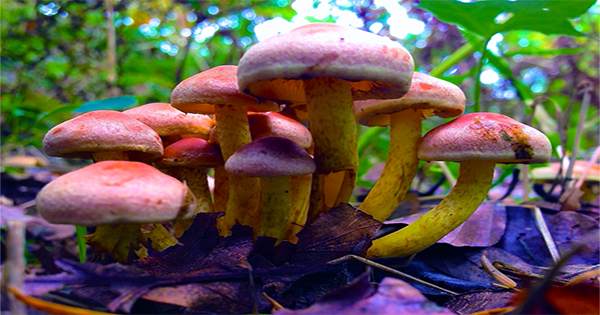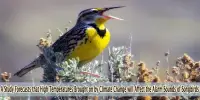The L.A. Catholic Worker Hospitality Kitchen, sometimes known as the “Hippie Kitchen,” is a Skid Row food distribution site. There is always something sprouting there.
However, the trees and lush vegetation in the courtyard have flourished this spring, providing shade and a haven for the hundreds of neighborhood residents who gather for the kitchen’s three times weekly dinners.
“This plant here I’ve never seen so many flowers on it,” marveled organizer Matt Harper, pointing to the berry-like blooms on a natal lily.
Bougainvillea eruptions in magenta frothed over the cinder block walls of the unoccupied area close to the kitchen and the gates. Fire-colored blossoms on the Indian coral tree stood out against the tree’s green leaves. Even a dirt area that everyone in the kitchen assumed had been barren was sprouting a calla lily.
“We used to have all sorts of lovely flowers here, and then they all died off,” Harper said, looking down at the unexpected blossom. “But with all these rains you realize the bulbs are there. They’re just waiting to bloom. Nature will take care of itself.”
Everything is growing everywhere all at once in Southern California.
The state-wide explosion of surprise blossoms from meticulously kept gardens and sidewalk cracks alike are all due to a perfect combination of precipitation and temperature that has sped up plant growth. This includes the lush greenery in city parks, the mustard flowers illuminating the hillsides, and the lush greenery in city parks.
Those 31 atmospheric rivers delivered steady, nourishing rainfall from October to March. Additionally, regional temperatures were mild, with no early-spring heat waves to devastate tender infant plants.
The seed bank is a really very, very precious thing, mysterious as it is. All the seeds of all of these gorgeous flowers we see were there, and no one could have told. Plants are amazing, I’m telling you.
Botanist Lucinda McDade
The combination of those two factors has produced “an absolutely glorious spring,” one that has been more vibrantly colorful for longer than any in recent memory, said Jeremy Yoder, a Cal State Northridge biologist.
Roses have thorns, and this superbloom has briars too. All plants are thriving in these conditions, from native wildflowers to invasive weeds.
The growth has highlighted truths about our ecosystem that were easier to ignore in drier years: The timing of blooms has been thrown off by a changing climate, alien species have changed the environment, and many fields that appear to be vacant actually contain beds of life that are dormant and preparing to bloom.
There’s a lot to appreciate about the growth around us. There’s a lot to learn from it, too.
“Even before industrialization and the climate change that resulted from human-caused greenhouse gas emissions, rainfall in Southern California varied considerably year to year,” Yoder said. “As a result, the region’s native wildflowers evolved to withstand periods of drought.”
For a native annual like our state flower, the California poppy, “their whole life cycle is based on flowering quickly and making seeds and getting those seeds into what we call the seed bank in the soil,” he said. “They can hang out there until the next good year,” which could be next season or the next decade. “Then they get a good rain and a cold winter to prime them beforehand, and they go crazy.”
Many annual plants will only allow a portion of their seeds to blossom during extended droughts like the ones we’ve been seeing in recent years. It’s an evolutionary tactic that enables plants to play the long game.
Only a small portion of the bank’s seeds blossom and produce new seeds, while the remainder wait to develop into vulnerable young plants until conditions are more favorable.
A bumper year like this one is both a visual feast and a down payment on future blooms. If no one plows them under to construct a big-box shop or a parking lot, today’s wildflowers will continue to deposit seeds into the seed bank that can survive in the soil for years until the proper conditions arise.
“You can go for a walk and under your feet are millions of seeds just sitting there in the seed bank. That potential for beauty in a landscape that is otherwise essentially barren in a non-good year is so freaking cool,” said Nick Jensen, director of the conservation program at the California Native Plant Society. “That is like the coolest thing. It still blows my mind, that that potential is there.”
If you take away nothing else from this season’s superbloom, let it be this: Do not confuse a dry brown hillside or field for a lifeless wasteland. It may be a nursery of wildflowers just waiting for the right time to flourish.
The inverse is also true. A brilliantly colored hillside doesn’t necessarily indicate a thriving, healthy ecosystem at work.
The vivid green grass on the foothills, the pops of fuchsia blossoms in thickets of coastal ice plant, the yellow flowers of black mustard: None of it is native to Southern California. A lot of it is also invasive, strong-arming (strong-rooting?) resources away from more beneficial native plants and disrupting the harmony of the ecosystem.
This isn’t a recent development. The Spanish came to this area as early as the 18th century to introduce the grasses that turn the hills green after a wet winter. Around the same time, black mustard appeared. According to some sources, it was planted along El Camino Real at the request of Spanish missionaries who intended to mark their travel route in gold.
“It’s been this 300-year-long process of colonizing this land, from both Native people and native plants,” said Jason Wise, an environmental educator in Los Angeles.
The end effect is a landscape that, while it may look beautiful from some perspectives, is really less resilient to climate change.
Southern California’s indigenous plants have evolved to be more fire-resistant. This feature was recognized by the Tongva, Tataviam, Chumash, and other Native Americans who first occupied this area. They incorporated it into their land management strategies by using controlled burns to remove extra foliage and encourage seed release.
Contrarily, many invasive species are easy to catch fire when an unanticipated source of fire is present, such as lightning, a lit cigarette, or a downed power line, and can easily spiral out of control. The thickets of black mustard are expected to dry out this summer, which worries land managers and conservationists that this would occur.
“Whenever the season does turn to drier conditions and that vegetation is no longer as green, it’s going to be a bigger fuel supply for burning,” Yoder said.
Multiple things can be true at once. Many of the stunning flowers of this spring have a convoluted history. However, they continue to draw our attention and cheer us up because they are attractive, and there is much to be said for being able to appreciate beauty wherever it may be found in life.
Not everyone has the chance to take a journey out to one of the comparatively few locations where wildflowers are protected and take in the beauty of native plants. In many areas of Southern California, attractive shrubbery overhanging motorway retaining walls and flowering weeds are the most readily available flora. They still matter because of the joy they cause.
When Wise leads groups of kids on nature excursions, they don’t bother to inquire about whether the plants are invasive before gasping in awe when they find ones that are taller than they are. Wise says he tries not to crush that sense of wonder. Instead, he leans into it.
“I’ll say, ‘Yeah, it’s amazing how big these got. All the rain made them huge! Here’s where this plant comes from. And do we see what it’s doing to the other plants around it? Those ones have some pretty flowers too, but they’re kind of in the shade now. What do you think that plant thinks?’” he said. “Just providing more things to think about, some extra layers, without just being like, ‘No, that’s bad, don’t like that flower.’ That’s the nuance of a real-life conversation.”
This season’s flowers might leave behind more than the seeds of future blooms. Long after they’re gone, they can rekindle our resolve to safeguard the land’s capacity to astound and enchant us as it has this year. What a legacy that would be.
“The seed bank is a really very, very precious thing, mysterious as it is. All the seeds of all of these gorgeous flowers we see were there, and no one could have told,” said botanist Lucinda McDade, director of the California Botanic Garden in Claremont. “Plants are amazing, I’m telling you.”
















